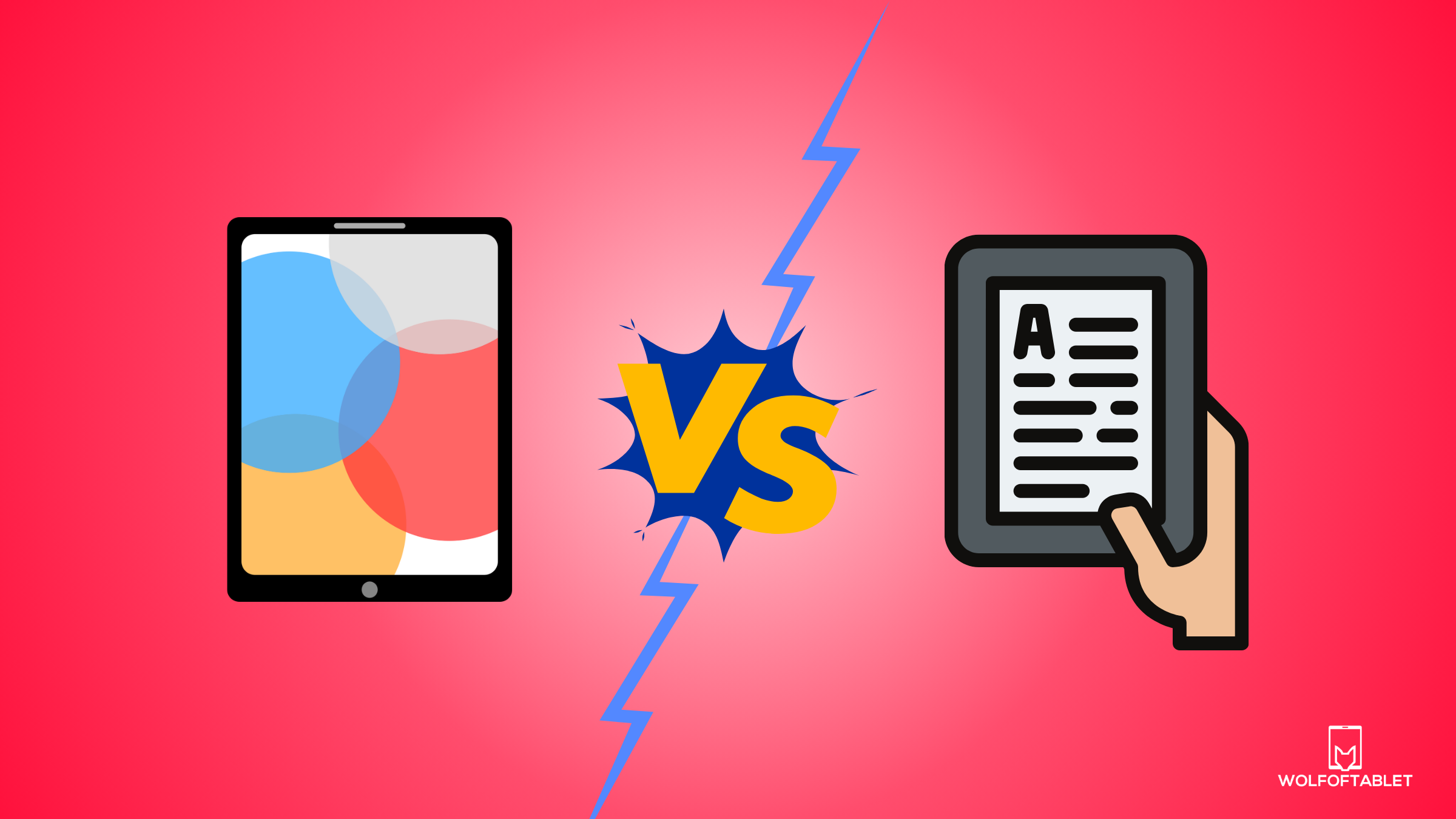The Kindle serves a singular purpose—reading ebooks—while iPads offer a multitude of functionalities. From reading and gaming to watching movies, note-taking, web surfing, and more, iPads are versatile devices with a wide range of applications.
I want to compare Apple iPads vs Kindle Ereaders and find out which one is better for reading, what the differences are, the pros, the cons, etc.
Apple iPad vs Kindle
These are two different devices, but let’s compare the important specs and features when it comes to reading.
| Apple iPad | Amazon Kindle | |
| Which Has A Better Price? | X | ✓ |
| Which Has More Storage? | ✓ | X |
| Which Has Longer Battery Life? | X | ✓ |
| Which Causes Less Eye Strain? | X | ✓ |
| Which Device Is More Portable? | X | ✓ |
| Which Has Less Glare? | X | ✓ |
| Which Has More Content Variety? | ✓ | X |
Choosing an e-reader or a tablet based on this information is rather simple – Amazon is better when it comes to reading, it’s cheaper, it has a better battery life, it causes less eye strain, it’s lighter and has no glare, but it has less storage, less content and less functionality then iPad.
Then again, if you want to read comic books, magazines, kids’ books, and do other stuff – Apple iPad should be your choice since Kindle is limited to ebooks and audiobooks.
Reasons To Buy Apple iPad & Reasons To Buy Kindle For Reading
- If you read to children.
- If you want a multifunctional device.
- If you want to take notes while reading.
- If you want access to more bookstores.
- If you want to read comics, magazines, and books with images.
- If you want to read a lot.
- If you want to read outdoors.
- If you want less strain on your eyes.
- If you want a lightweight, cheap device.
The Key Differences
There are several reasons why people choose iPad over Kindle and vice versa. The biggest differences between these two options are:
- iPads have LCD displays, and Kindle Ereaders have E-ink displays. iPad display adds more eye strain when reading; it emits blue light and affects our sleep, but you can limit that by adjusting brightness settings on the iPad and getting a screen protector that limits the blue light and glare.
- iPads are more expensive than Kindle Ereaders. A new iPads starts at $459, but a Kindle starts at $119.99.
- iPads have more content and more functionality. You can read comics, read magazines, watch movies, and other digital media. On Kindle, you are limited to ebooks and audiobooks.
- Kindle readers have better battery life. Kindle can last up to 30 hours of battery, while iPads can get only up to 10 hours.
- iPads have more bookstore options. You can get Amazon Kindle, FBreader, Google Play Books, Apple Books and many others.
- Kindle e-readers are lightweight. For example, Kindle Paperwhite only weighs 7.23oz(205g) while iPad 10 weighs 16.9oz(481g).
Tips For Reading On iPad
If you will be reading on your iPad and want to reduce eye strain, here are some tips to help you achieve a more comfortable reading experience:
- Take Breaks: It’s extended use of an iPad that really causes your eyes to dry out and strain. Therefore, take a breather every 30 minutes, and you’ll be able to read for much longer.
- Use A Blue Light Filter: You can use a Blue Light Filter or the Night Shift option available on the iPad to help reduce the blue light your iPad emits. This, too, helps reduce eye strain.
- Reduce Brightness: Try not to read at maximum brightness, but don’t go too low, either. Instead, find a sweet spot that feels comfortable to your eyes.
- Use Screen Protector: I’ve also found that matte display protectors tend to rule out glare by a significant margin as well and reduce eye strain.
- Don’t Read Before Bed Time: Since iPads emit blue light, it’s not recommended to read 1 hour before sleep. It will affect your sleep quality.
FAQ
Is reading on iPad bad for the eyes?
Yes, reading on the iPad hurts your eyes if you do it for an extended period of time. The iPad emits blue light, which, when exposed to it for long durations, may lead to eye strain and discomfort. I recommend buying an iPad screen protector that reduces blue light and adjusting brightness settings.
Can I read Kindle on a smartphone?
Yes, you can read Kindle books on your smartphone, providing an excellent way to maximize your device’s capabilities and eliminating the need for a separate e-reader.
How far should iPad be from your eyes when you are reading?
To avoid eye strain, you should hold your iPad about 17 inches away from your eyes when reading. If you feel the need to bring your iPad closer or are squinting your eyes, then we recommend increasing the font size of the text being displayed.
Is iPad or Kindle better for reading in bed?
Kindle is a better option for reading in bed; it’s more lightweight, it doesn’t emit blue light, and it won’t affect your sleep.
Which Is The Best iPad For Reading?
All iPads share similar functionality and support the Kindle Store and Apple Books. While all iPad models offer up to 10 hours of battery life, the iPad Mini 6 stands out as the ideal choice for reading due to its compact 8.3-inch display. I prioritize compact sizes and lightweight builds for enhanced portability, making it comfortable to read anywhere, especially in bed and sofa.

I'm a writer and editor in iPads & Android Tablets, Windows Tablet section. I'm passionate about technology, especially about tablets. I'm on a mission to assist people in discovering their ideal tablets. In addition, I'm dedicated to producing helpful how-to guides and sharing top-notch tips and tricks. In my early carrier I founded and became and editor at worldoftablet and have been a guest author at many other tech blogs. In wolfoftablet I'm focusing on iPads, Tablets, Apple Pencil, Apps, Reviews, Buyers Guides and Tablet Accessories. In free time I like to play games on my PS5 or iOS.

